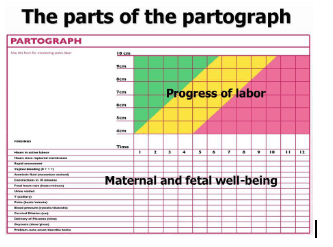Introduction
Introduction ( 4 Questions)
A nurse is reviewing the partograph of a client who is in labor.
The nurse notes that the cervical dilation curve is above the alert line and the fetal heart rate is 160/min.
The nurse should recognize that these findings indicate which of the following complications?
This is because the cervical dilation curve is above the alert line, which means that the dilation is slower than 1 cm per hour and indicates a possible obstruction in the birth canal. Obstructed labor can lead to serious complications such as fetal distress, infection, uterine rupture, and maternal death.
it is a rare but life-threatening complication that usually presents with severe abdominal pain, vaginal bleeding, shock, and loss of fetal heart tones. The fetal heart rate in this case is 160/min, which is within the normal range of 110 to 160 bpm.
it is a condition where the fetus is not receiving enough oxygen or blood flow and shows signs of abnormal fetal heart rate patterns, such as tachycardia (more than 160 bpm), bradycardia (less than 110 bpm), or decelerations. The fetal heart rate in this case is 160/min, which is within the normal range of 110 to 160 bpm.
it is a condition where the mother or the fetus develops an infection during labor, such as chorioamnionitis or sepsis. It usually presents with fever, foul-smelling amniotic fluid, maternal or fetal tachycardia, or leukocytosis.
This is because the cervical dilation curve is above the alert line, which means that the dilation is slower than 1 cm per hour and indicates a possible obstruction in the birth canal. Obstructed labor can lead to serious complications such as fetal distress, infection, uterine rupture, and maternal death.
The question does not provide any evidence of infection in this case.

